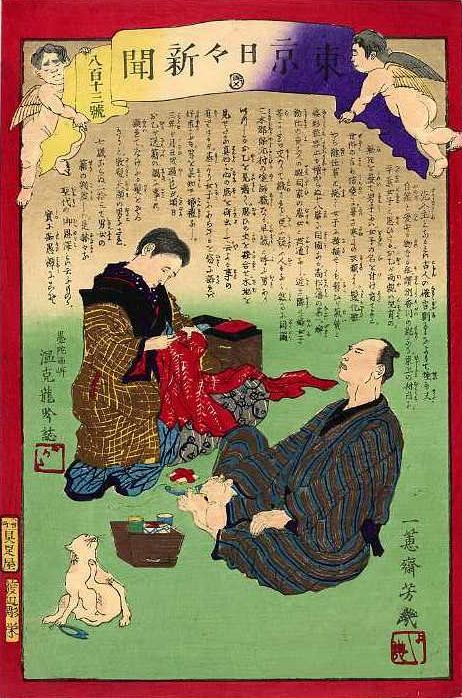Commentary
As a woman, Ooto would not have been allowed to crop her hair. As a man, he had that choice.
Cropped hair
cropped head reflects 散髪天頭 (zangiri atama) -- literally "cropped-hair head" -- now more commonly written 散切り頭. This style became fashionable after 1871, when men who had been obliged by their status to wear topknots and swords were free to cut their hair and not wear swords, thus ending such distinctions in dress.
Men generally took to cropping their hair short, without shaving or tying it. As this style spread, so did the expression: "If you tap a cropped head, you can hear civilization and enlightenment" (散切り頭を叩いてみれば、文明開化の音がする zangiri atama o tataite mireba, bunmei kaika no oto ga suru). Kabuki accommodated the age with a new genre of plays called "zangiri mono" (cropped hair pieces).
In 1872, Tokyo prefecture issued an ordinance forbidding women to cut their hair. In 1873, Meiji Tenno cut his hair, and men in government service quickly followed.
The cropped-head style is still alive and well in the 21st century. If you have long hair, you can walk into any salon or barbershop in Japan, ask for a zangiri, and walk out looking like your favorite manga or anime chracter.
See note on yaro heads in TNS-876 Misterious incidents for an example of the "Meiji transformation" to cropped hair.
